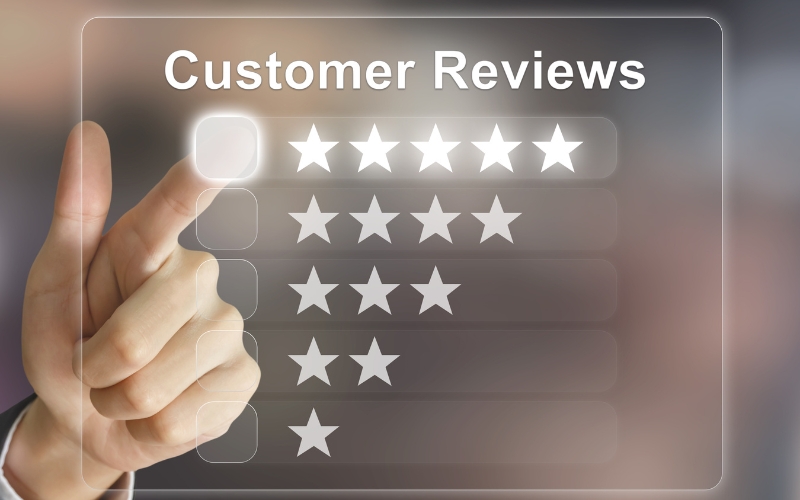
In today’s digital landscape, optimizing your website for better user experience (UX) is one of the most crucial website conversion tips you can implement. As more businesses move online, the competition to capture and convert visitors into paying customers becomes more intense. A website that offers seamless navigation, fast loading times, and mobile responsiveness not only enhances the user experience but also plays a key role in boosting conversion rates. This article will guide you through the most effective strategies for optimizing UX and turning casual visitors into loyal customers.
Optimizing Your Website’s User Experience (UX)

One of the most effective website conversion tips is optimizing your website’s User Experience (UX). A seamless UX not only improves visitor satisfaction but also plays a pivotal role in increasing your website’s conversion rates. When users find it easy to navigate your site, experience fast loading times, and enjoy mobile-friendly design, they are more likely to stay longer and engage with your content. These elements are essential for reducing bounce rates and encouraging visitors to take desired actions, such as making a purchase or filling out a contact form.
Easy Navigation: A Key to Lower Bounce Rates
When optimizing for conversions, one of the most important website conversion tips is to ensure easy and intuitive navigation. Visitors should be able to find what they’re looking for without confusion or frustration. If they can’t easily locate products, services, or key information, they are likely to leave your site and seek out a competitor. A well-structured navigation menu, clear labels, and a logical page flow can make a significant difference in keeping visitors engaged. Adding sticky navigation bars or breadcrumbs can further enhance usability, especially for larger websites. Easy navigation helps retain visitors and increases the likelihood they’ll explore additional pages and convert into customers.
Fast Loading Times: A Crucial Factor in Conversions
Another critical website conversion tip is optimizing your website for speed. Research shows that even a slight delay in page load time can lead to higher bounce rates and lost conversions. Visitors expect websites to load in under 3 seconds, and any longer can cause them to abandon the page. To ensure fast load times, compress images, minimize heavy code, and implement browser caching. Additionally, using a Content Delivery Network (CDN) can help deliver content more quickly to users worldwide. A fast-loading website provides a smooth, frustration-free experience, which keeps visitors on your site longer and encourages them to take action, such as completing a purchase or signing up for a newsletter.
Mobile-Friendly Design: The Importance of Responsiveness
In today’s mobile-first world, ensuring your website is mobile-friendly is one of the most important website conversion tips. With mobile traffic accounting for more than half of web traffic globally, having a site that works seamlessly across all devices is non-negotiable. A responsive design ensures that your website automatically adjusts to different screen sizes, making it easier for visitors to navigate and engage with your content. Poor mobile optimization can result in frustration, with visitors abandoning the site due to elements that are hard to click or read. By making your website mobile-responsive, you create a positive user experience that can lead to increased conversions, regardless of the device used.
Leveraging Clear and Compelling Calls-to-Action (CTAs)

One of the most effective website conversion tips is the strategic use of clear and compelling Calls-to-Action (CTAs). CTAs guide visitors toward taking specific actions, such as signing up for a newsletter, making a purchase, or scheduling a consultation. Well-crafted CTAs can drastically improve conversion rates by making it easier for users to know exactly what steps to take next in their journey on your website. Here’s how to optimize your CTAs for better results.
Be Clear and Direct
A key website conversion tip is to ensure your CTAs are clear and easy to understand. The language you use should leave no room for ambiguity, telling the user exactly what action they need to take. For example, instead of using a vague CTA like “Click Here,” be specific with phrases like “Buy Now,” “Get Your Free Trial,” or “Join Our Newsletter.” These action-oriented phrases provide the visitor with a clear call to action and make it more likely they’ll follow through. The more specific and direct your CTA is, the better your chances of turning visitors into customers.
Placement is Crucial
Another important website conversion tip is the strategic placement of your CTAs. Make sure they are visible and easy to find. CTAs should be positioned above the fold (the area visible on a screen without needing to scroll), so visitors don’t have to search for them. For example, placing a prominent CTA on the homepage or landing page can immediately grab the visitor’s attention. Additionally, repeating CTAs at key points throughout your website—such as on product pages, blog posts, or at the end of service descriptions—keeps the conversion journey clear and convenient.
Creating Urgency and Scarcity
One powerful technique to improve the effectiveness of your CTAs is incorporating urgency and scarcity. Adding phrases like “Limited Time Offer” or “Only 5 Left in Stock” can create a sense of urgency, prompting visitors to act quickly. When users feel they might miss out on a valuable opportunity, they are more likely to convert. This tactic not only encourages immediate action but also enhances the overall user experience by offering them something of value at the right moment.
A/B Testing for Optimal Performance
To further enhance your CTAs, it’s essential to regularly test different variations of your CTA buttons. A/B testing—where you compare different versions of your CTA to see which one performs better—provides valuable insights into what resonates most with your audience. Testing elements like button color, size, text, and placement can help you refine your CTAs and ensure they’re as effective as possible in driving conversions.
Building Trust Through Social Proof and Testimonials

One of the most effective website conversion tips is to use social proof to build trust with your visitors. Social proof refers to the psychological phenomenon where people are more likely to trust and follow the actions of others, especially when making decisions. By incorporating customer testimonials, case studies, and trust badges into your website, you can increase credibility and persuade visitors that your product or service is reliable. These elements help to reassure potential customers that they are making the right choice, ultimately increasing the chances of converting them into paying clients.
Customer Testimonials: A Powerful Endorsement
Customer testimonials are one of the most impactful website conversion tips you can implement. Positive feedback from past customers serves as a direct endorsement of your products or services, showing potential clients that others have had successful experiences with your brand. A well-crafted testimonial highlights the real-life benefits of your offering, and when it’s detailed and specific, it builds authenticity and trust. By featuring these testimonials prominently on your homepage, product pages, or landing pages, you allow new visitors to see the value you provide, encouraging them to take the next step in their journey.
Make sure to include a variety of testimonials, such as those from customers in different industries or with varying needs, to appeal to a broad audience. Additionally, including the name, photo, and business of the person providing the testimonial can add more credibility, making the endorsement feel genuine and trustworthy.
Case Studies and Success Stories
Another great social proof tool is case studies. These in-depth stories highlight how your product or service has helped solve a specific problem for a customer, offering concrete examples of success. Case studies demonstrate the tangible impact your business can have, making them a powerful tool for visitors who require more evidence before making a purchasing decision. Case studies can showcase measurable results, such as increased sales, improved efficiency, or other positive outcomes that align with your potential customer’s goals.
By breaking down the challenges, solutions, and results in your case studies, you allow visitors to relate to your past clients’ situations and visualize the benefits your business can offer them.
Trust Badges and Certifications
In addition to testimonials and case studies, trust badges and certifications are valuable website conversion tips for boosting credibility. These badges, such as SSL certificates, industry-specific accreditations, or security seals, assure visitors that their data is protected and that your website meets recognized standards. Trust badges are particularly important in eCommerce and service-based websites where visitors might be hesitant to share sensitive information like credit card details.
Personalizing the User Experience for Higher Engagement

One of the most effective website conversion tips is personalizing the user experience to increase engagement and drive conversions. Personalization involves tailoring the content, offers, and interactions on your website to meet the individual needs and preferences of your visitors. By creating a customized experience, you can foster a deeper connection with your audience, which not only enhances user satisfaction but also boosts the likelihood of converting casual visitors into paying customers.
Dynamic Content for Relevant Experiences
Dynamic content is a powerful tool in personalizing the user experience. This involves adjusting the website’s content based on factors such as the visitor’s location, browsing history, or previous interactions with your site. For example, if a visitor has previously viewed a specific product category, displaying related items or promotions can make their experience feel more relevant. Personalizing content in this way increases engagement because it reduces the effort visitors need to put into finding products or information that interest them. As a result, visitors are more likely to stay on your site longer and engage with your offerings.
Using dynamic content is one of the top website conversion tips, as it makes visitors feel valued by showing them content specifically tailored to their needs. This also encourages them to explore your site further, ultimately improving your conversion rates.
Personalized Offers and Discounts
Another valuable personalization tactic that can significantly boost conversions is offering personalized discounts or promotions. By using visitor data such as browsing behavior or past purchases, you can present targeted offers that are more likely to resonate with users. For instance, if a visitor has shown interest in a particular product but hasn’t yet made a purchase, you could offer a time-sensitive discount or free shipping to incentivize them to complete their transaction. Personalized offers create a sense of urgency and exclusivity, prompting visitors to take immediate action and convert.
Tailoring your promotional efforts based on customer behavior is an essential website conversion tip that can help turn hesitant visitors into loyal customers by offering them something of value.
Product Recommendations
Personalized product recommendations are another powerful website conversion tip for enhancing engagement. By analyzing a visitor’s previous browsing and purchasing behavior, you can suggest products that align with their interests. These recommendations make it easier for users to discover new products they might be interested in, which leads to higher engagement and increased sales. Whether through upselling higher-end products or cross-selling complementary items, personalized product recommendations can significantly improve the overall shopping experience, making it easier for visitors to find exactly what they need.
Optimizing Your Website for Speed and Mobile Compatibility

One of the most critical website conversion tips is optimizing your site for both speed and mobile compatibility. In today’s fast-paced digital world, users expect websites to load quickly and perform seamlessly, especially on mobile devices. Slow load times and poor mobile experiences can lead to higher bounce rates and lost opportunities to convert visitors into paying customers. By ensuring your website is optimized for speed and mobile compatibility, you can enhance user experience, improve engagement, and significantly boost your conversion rates.
The Impact of Website Speed on Conversions
Website speed is one of the most crucial factors influencing website conversion rates. Studies show that a delay of even one second in page load time can result in a 7% reduction in conversions. Slow websites frustrate users, causing them to leave before taking any action. In contrast, faster websites provide a seamless browsing experience, encouraging visitors to explore further and complete desired actions, such as making a purchase or filling out a form. One of the best website conversion tips is to regularly test your website’s load speed and address any issues promptly. This can involve compressing images, using a content delivery network (CDN), and minimizing excessive code or heavy scripts. Faster websites are not only more user-friendly but also rank better in search engines, giving you more visibility and greater chances of attracting and converting visitors.
Mobile Optimization: A Must for Higher Engagement
As mobile traffic continues to outpace desktop usage, optimizing your website for mobile devices is essential for improving conversions. Mobile optimization ensures that your website functions smoothly on smartphones and tablets, offering a positive user experience regardless of the device being used. Visitors who encounter difficulties on mobile—such as content that doesn’t load correctly, buttons that are hard to click, or slow navigation—are less likely to convert. Mobile optimization is one of the most effective website conversion tips, as it makes your site accessible and easy to use for a wider audience.
To optimize your website for mobile, ensure that your design is responsive, meaning it automatically adjusts to fit various screen sizes. Additionally, prioritize fast load times on mobile by simplifying images, reducing large files, and avoiding excessive pop-ups that can disrupt the user experience.
Actionable Tips for Optimization
To boost both speed and mobile compatibility, start by regularly auditing your website performance using tools like Google PageSpeed Insights or GTmetrix. These tools provide actionable suggestions on how to improve load times and mobile-friendliness. Implement responsive web design, optimize your images, and utilize caching to improve load times across devices.
Conclusion
One of the most valuable website conversion tips is to continuously monitor and optimize your site’s performance. For instance, tools like Google Analytics can provide you with in-depth insights into your visitors’ behavior, helping you identify areas for improvement. You can track metrics like bounce rates, session durations, and conversion funnels to pinpoint what’s working and what’s not. By using data-driven insights, you can make informed decisions to enhance your site’s design and user experience. To get started with Google Analytics, check out their comprehensive guide on website performance tracking for tips on setting up and interpreting your data.
In conclusion, implementing effective website conversion tips such as optimizing your website’s user experience (UX) is vital for improving conversion rates. By focusing on easy navigation, fast load times, mobile compatibility, and personalized content, you can create a seamless and engaging experience for your visitors. These efforts build trust, encourage actions, and ultimately increase the likelihood of turning website visitors into paying customers. With the right UX strategies in place, your website will not only attract visitors but also ensure they stay, interact, and convert.
For more details or to discuss your specific Website Development and Design, visit our Website Development and Design page.

